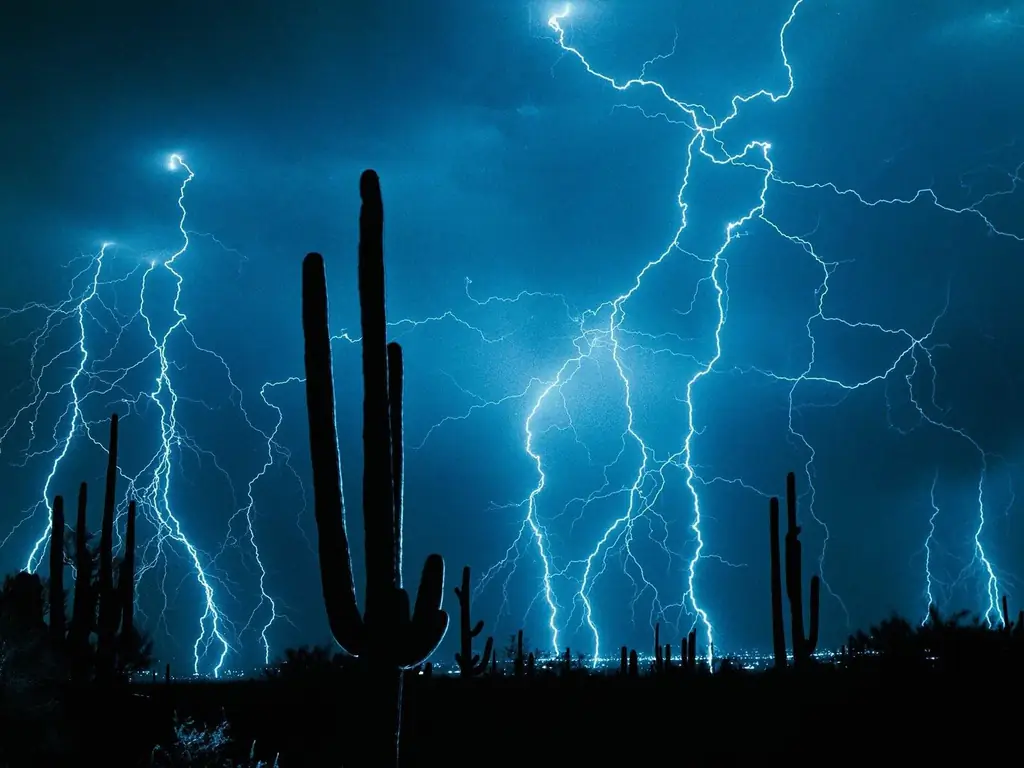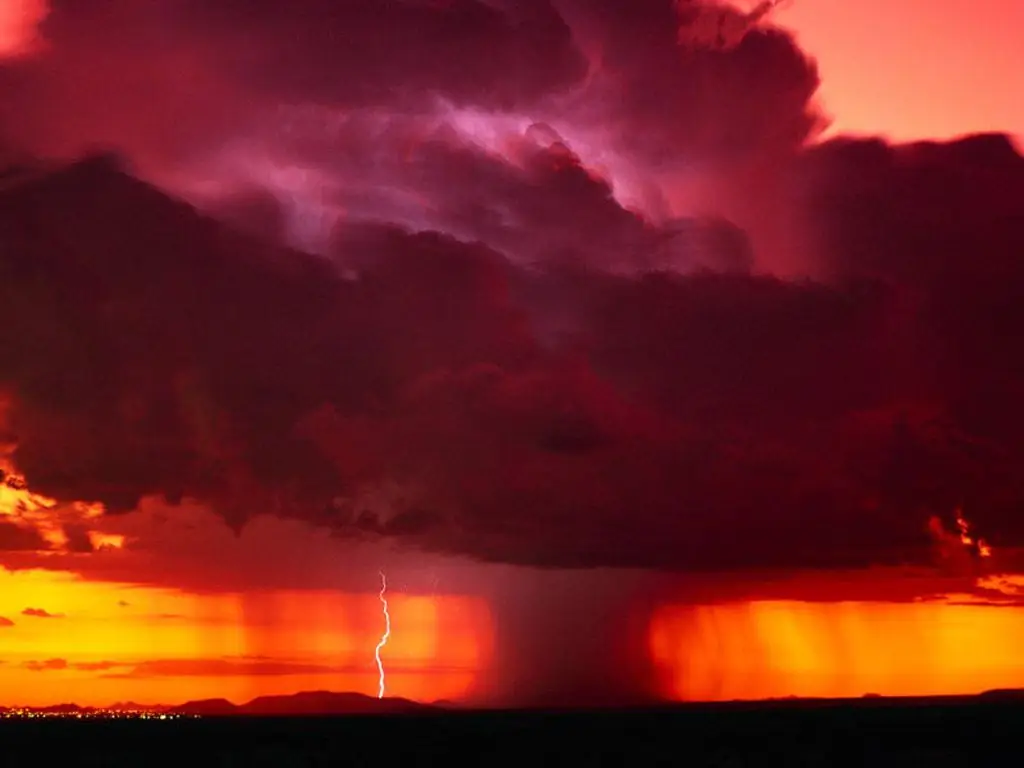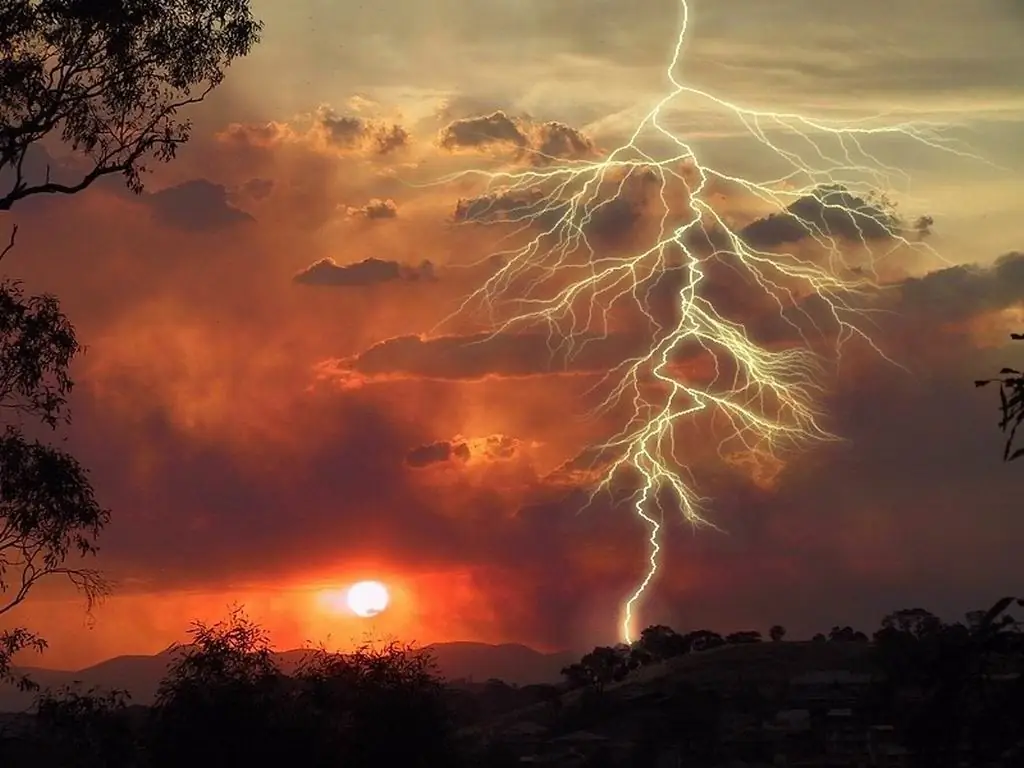Not every photographer can decide to shoot lightning. It is quite difficult to photograph the elements at the peak of activity, providing yourself with shelter and correctly adjusting the camera, but the result will surely amaze everyone with its spectacle and scale.

Before deciding to photograph lightning, it is worth remembering that its temperature is 5 times higher than the sun, and the length can reach 40 km. Therefore, you cannot do without shelter and thoughtful settings for the technique. Such pictures have always attracted attention and still amaze the imagination, capturing the power of natural elements that are beyond the control of a modern person.
Correctly exposed shutter speed, aperture and photosensitivity will help to fix a lightning strike in the photo.

Excerpt
You can show everyone the dangerous beauty of a thunderstorm by setting the exposure for a period of 10 seconds or more. During this period of time, the camera will take pictures of everything that happens in the sky. The slower the shutter speed, the higher the chance of capturing the unique phenomenon on film. If the camera has a BULB mode, then together with the release cable, you can significantly simplify the work of hunting for lightning. In the daytime, you can increase the shutter speed using neutral-gray filters, including a polarizer and ND. With a very long exposure, the sensor can overheat and start making noise, and the photo will turn out to be overexposed.
Diaphragm
In the daytime, the diaphragm is set at 11-16, at dusk and at night it should be opened for normal exposure.
ISO
During the day, the minimum ISO will help to fix the lightning, but in the dark it is best to raise this indicator, but not higher than 400, otherwise the amount of noise will increase dramatically.
Focus
At night, manual infinity focus mode is most often used. To accentuate the front of the picture, use a flashlight and focus on the illuminated area. Don't forget about LiveView, which makes objects larger and easier to focus on.

Taking beautiful photos of thunderstorms and lightning will not work without certain luck factors. Among them, shooting time, location and weather conditions play an important role. Achieving the best composition will allow the competent use of the terrain around the raging elements. It is enough to find a road that goes into the distance, a smooth surface of a river that reflects the sky, a lonely tree or colorful buildings and include them in the subject of photography. In cloudy daytime, lightning will be difficult to see if you do not focus on the cloud itself. At night, a photo of the elements may be less effective due to the monotony, but at the time of sunset, the pictures will turn out to be as colorful and interesting as possible. If the thunderstorm is not intense and no more than 2 lightning strikes occur in 30 seconds, then it is better to postpone the shooting for the next time.

What accessories do lightning hunters need?
- Opt for an aluminum tripod with a hook to mount the weight to keep the gust of wind out of your vehicle. For more stability of the structure, it is better to use a tripod without a central rod on a tripod.
- Indispensable when shooting lightning will be a release cable or a more expensive option - a remote control with a timer.
- In the arsenal of a lightning hunter, there must be various light filters.
- A rain cover will help save the camera from excess moisture. The photographer should also make it easier for himself to wait for that shot and dress appropriately for the weather.
- When shooting at night, the flashlight will help focus and illuminate scenic foreground subjects.
- A protective hood will help protect the lens from splashes, and a microfiber cloth will effectively deal with traces of drops.
- Long exposures will drain the battery quickly, so it's best to have extra batteries with you.

Due to the fact that lightning can appear anywhere, many are wondering how to learn how to photograph the element correctly. For filming, it is better to find a place where, in addition to one sky, you can capture various objects in perspective, directed towards the thunderstorm. This will make the frame more effective and reflect the true scale of the elements.
Do not forget about personal safety and, first of all, you should find shelter for yourself. As a metal tripod exposed in an open area makes an excellent target for lightning. It is also recommended that you switch off your mobile phone and all devices capable of transmitting signals.






